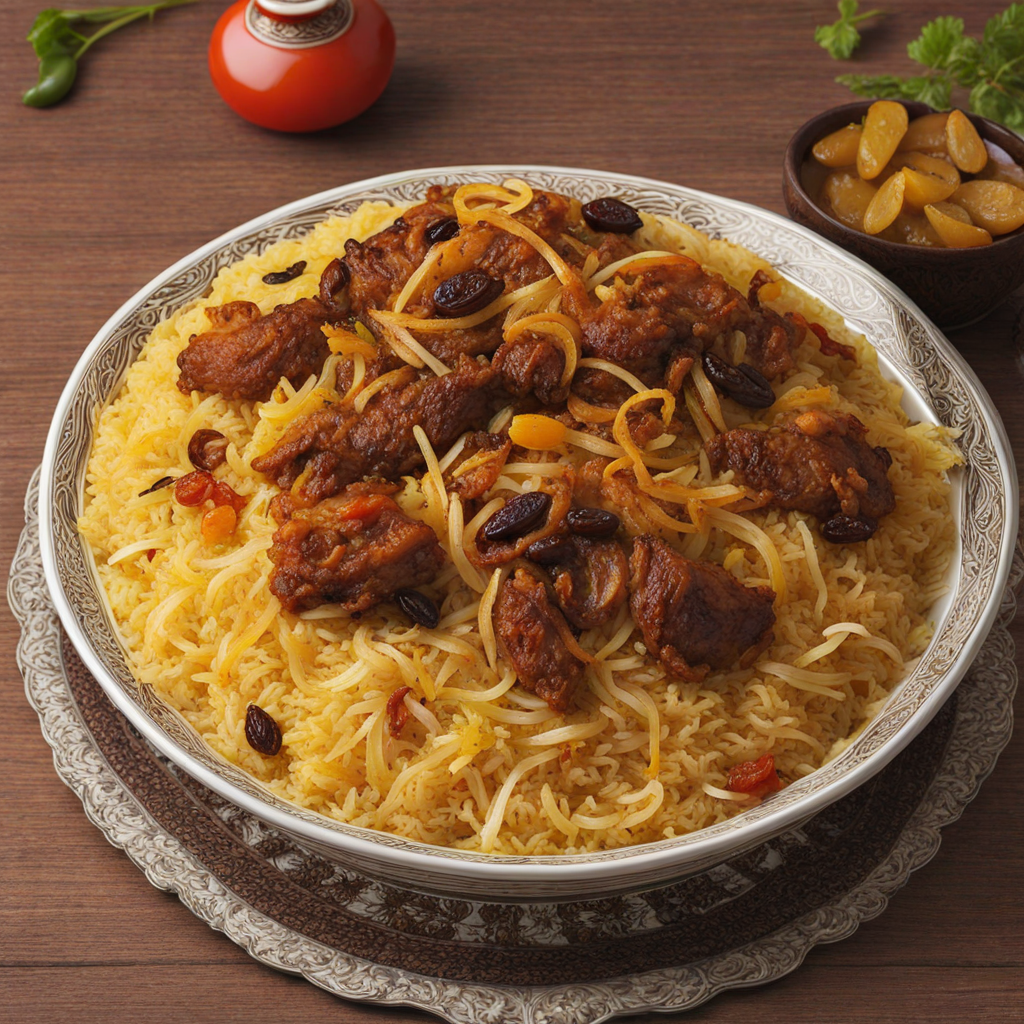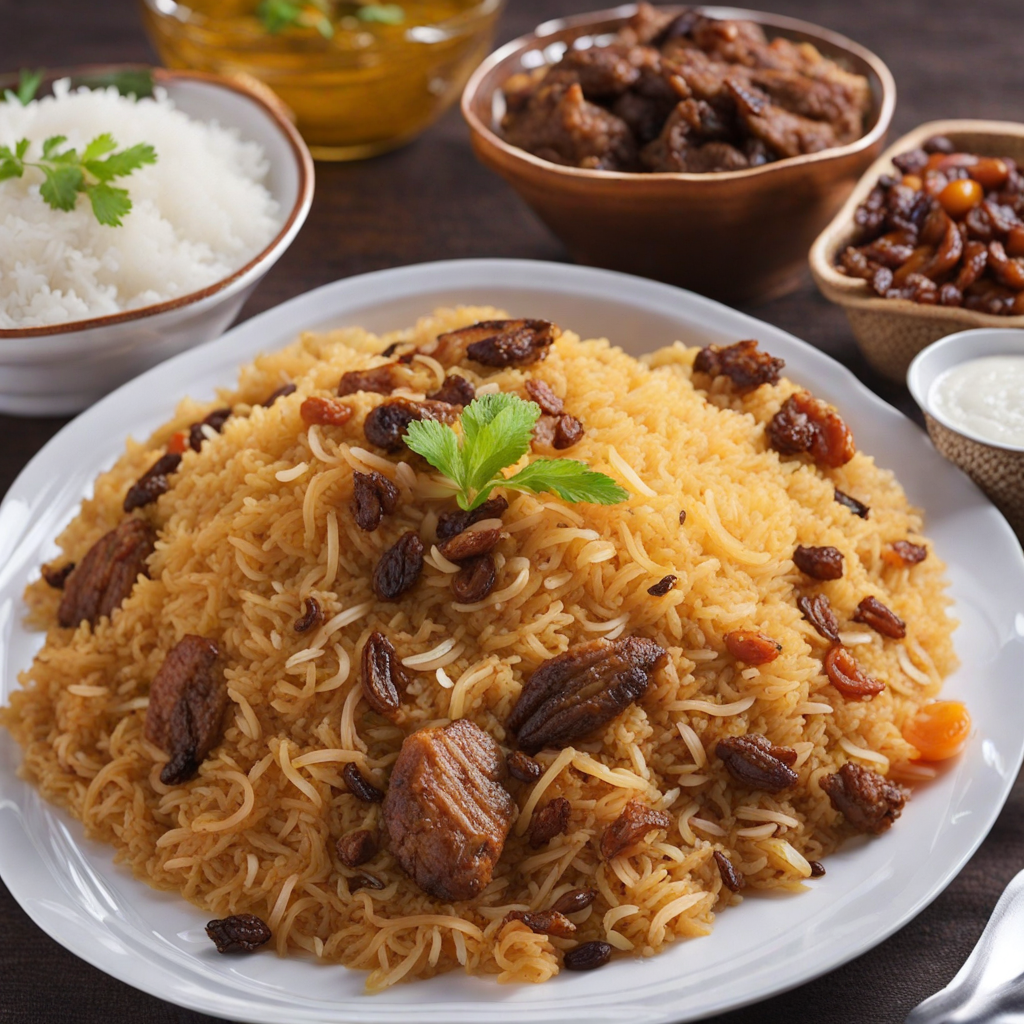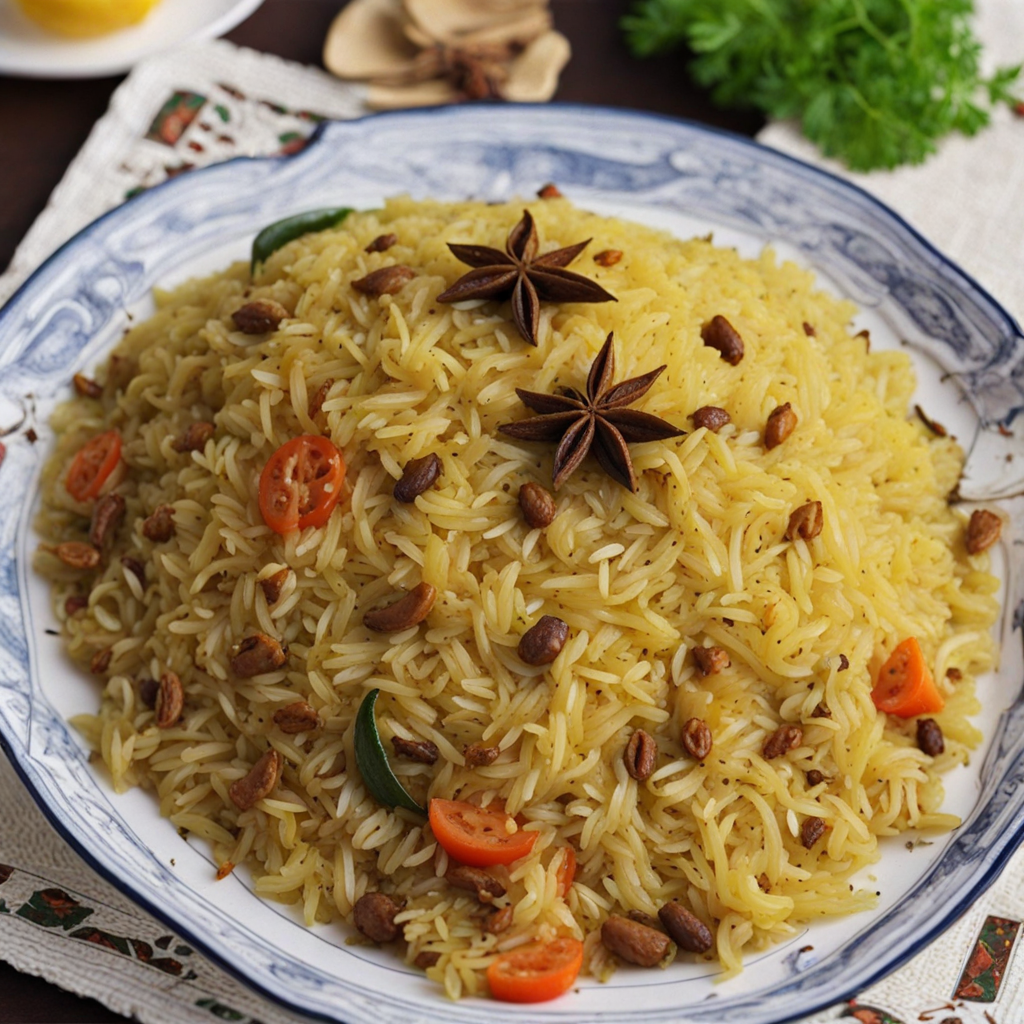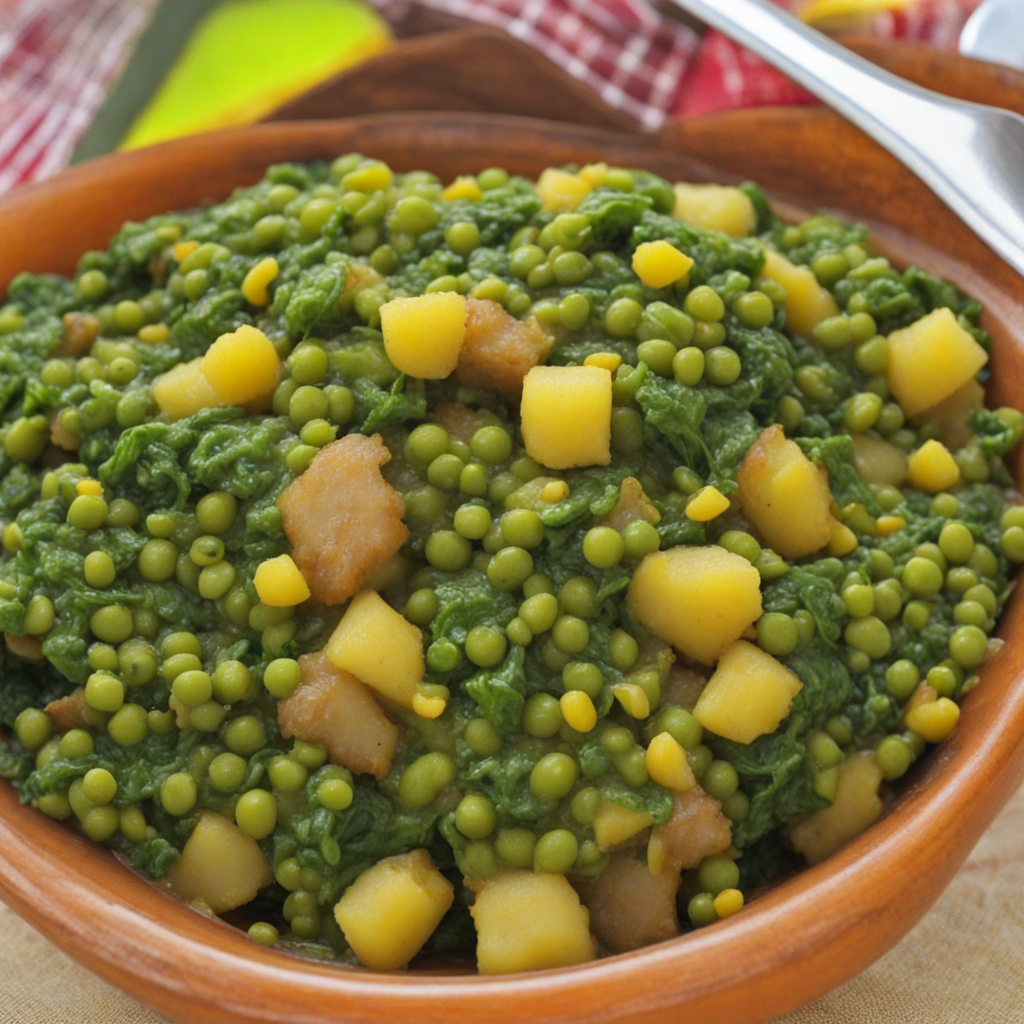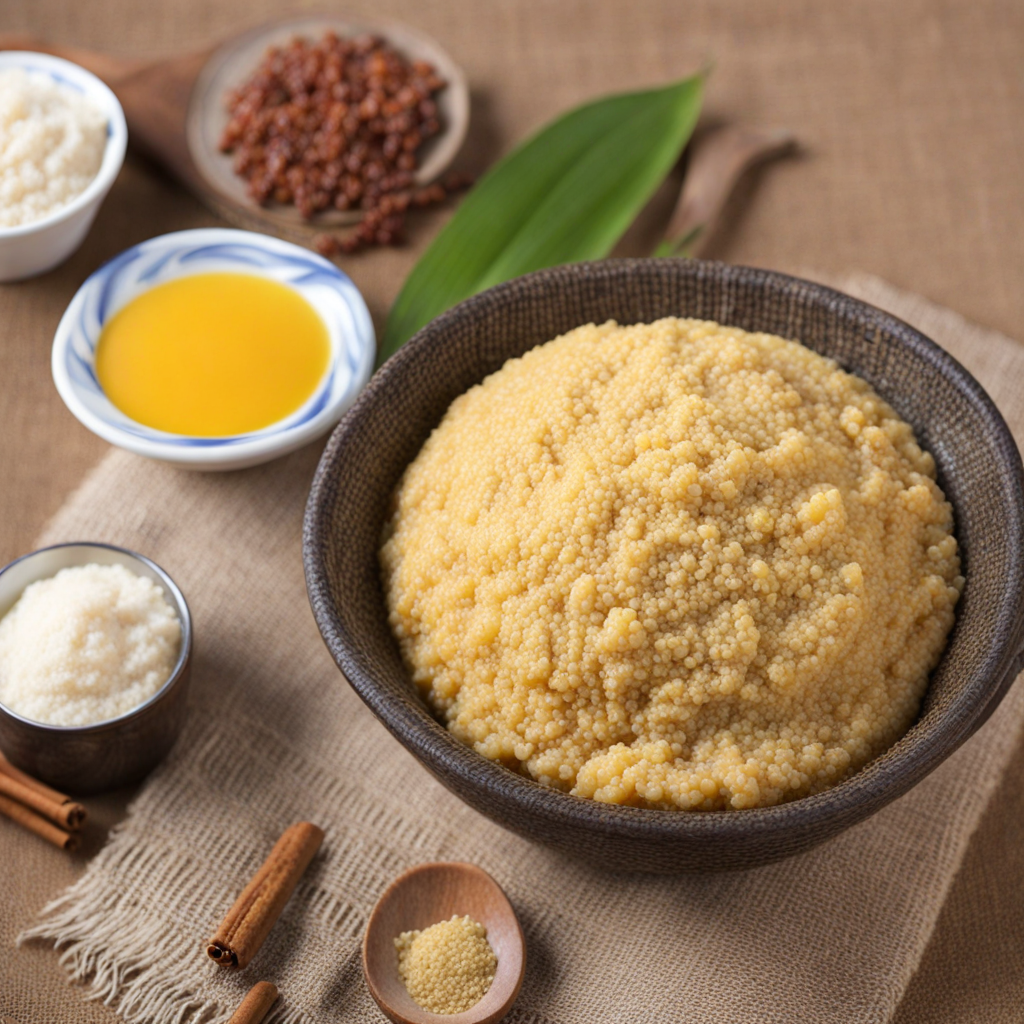Biriani
Biriani, a vibrant and aromatic dish, reflects the rich tapestry of Kenyan cuisine, blending influences from Indian, Arab, and Swahili cultures. This one-pot meal is primarily made with fragrant basmati rice, marinated meat—often chicken, beef, or goat—and an array of spices that create a symphony of flavors. The spices typically include cardamom, cloves, cinnamon, and nutmeg, which infuse the rice with a warm, earthy aroma, while saffron or turmeric add a golden hue that makes the dish visually appealing. Each bite is a delightful balance of tender meat, fluffy rice, and a medley of spices that linger on the palate, inviting you to savor every mouthful. The preparation of Kenyan Biriani often showcases a meticulous layering technique, where partially cooked rice is combined with the marinated meat and then steamed to perfection. This method allows the flavors to meld beautifully, with the steam ensuring that the rice absorbs the savory juices from the meat. Accompanied by a tangy side of kachumbari—a fresh tomato and onion salad—Biriani is not just a meal; it's an experience that engages all the senses. The contrast of textures, from the tender meat to the fluffy rice and the crunch of the salad, adds depth to the overall enjoyment. Traditionally served during celebrations and special occasions, Biriani is more than just food; it's a dish that brings people together. The communal aspect of sharing a large pot of Biriani fosters connections among family and friends, making every gathering memorable. As you indulge in this Kenyan version of Biriani, you'll discover layers of cultural history and a taste that is both unique and familiar, evoking a sense of warmth and hospitality that is deeply rooted in Kenyan tradition.
How It Became This Dish
The history of Biriani in Kenya is a fascinating tapestry woven from the threads of cultural exchanges, trade, and migration. Originally brought to the East African coast by Indian traders and Arab seafarers, biriani has roots that trace back to the Indian subcontinent, particularly the Mughal Empire. The dish is said to have been influenced by Persian cuisine, where layered rice dishes became popular. The convergence of these cultures on the Swahili Coast led to the development of biriani as a distinct culinary tradition in Kenya. As early as the 13th century, the Swahili Coast became a melting pot of various cultures due to trade routes connecting Africa, the Middle East, and India. The integration of spices and cooking techniques from these regions gave rise to a unique culinary landscape. Indian and Arab merchants who settled along the coast brought their culinary traditions, which included layered rice dishes akin to biriani. The use of spices such as saffron, cardamom, and cloves became prominent, making biriani not only a meal but a flavor experience that was both fragrant and rich. The cultural significance of biriani in Kenya cannot be overstated. It has evolved into a dish that symbolizes celebration and community. Traditionally, biriani is prepared for special occasions such as weddings, religious festivals, and family gatherings. The elaborate preparation and presentation of biriani reflect the importance of hospitality in Kenyan culture. Families often come together to prepare biriani, with each member contributing to the process, thereby strengthening familial bonds and community ties. Over time, biriani in Kenya has developed distinct regional variations, primarily influenced by local ingredients and cultural practices. In coastal cities like Mombasa, biriani often features seafood, while inland variations may incorporate beef, chicken, or goat. The use of local vegetables and spices also adds to the uniqueness of each regional version. For instance, in Mombasa, biriani is typically made with a spicy marinade called "kuku paka," which reflects the Swahili influence. In contrast, the inland variants tend to be milder, focusing on the meat's flavor while incorporating local spices. The preparation of biriani is an art form in itself. It typically involves marinating meat with spices and yogurt, layering it with partially cooked rice, and slow-cooking everything together. This method allows the flavors to meld beautifully, resulting in a dish rich in taste and aroma. In coastal regions, the use of coconut milk to enhance the dish is common, adding a creamy texture that complements the spices. This adaptation showcases how biriani has embraced local ingredients while staying true to its roots. The introduction of biriani to the Kenyan culinary scene has also been shaped by the arrival of the Indian diaspora. The Indian community in Kenya, particularly those who settled during the British colonial period, played a critical role in popularizing biriani. They brought with them their culinary practices, and biriani became a staple in Indian restaurants and homes. The dish began to gain popularity among the wider Kenyan population, transcending ethnic and cultural boundaries. In recent years, biriani has become increasingly popular in urban areas, where it is often featured at restaurants and food festivals. The advent of social media has further fueled this trend, with food enthusiasts sharing their biriani experiences and recipes online. As a result, biriani has transcended its original cultural boundaries and become a beloved dish enjoyed by people from various backgrounds. Moreover, the preparation of biriani has evolved, reflecting contemporary culinary trends. Chefs are experimenting with fusion recipes, incorporating elements from other cuisines while still maintaining the essence of traditional biriani. This adaptability has allowed biriani to remain relevant in a rapidly changing food landscape, appealing to younger generations who seek both authenticity and innovation. Today, biriani is often accompanied by traditional sides such as raita (a yogurt-based condiment) and kachumbari (a fresh tomato and onion salad), which enhance its flavors and textures. The entire meal is a sensory experience, celebrating the rich culinary heritage of Kenya while showcasing the ongoing evolution of biriani. Despite its transformation over the years, biriani retains its cultural significance as a dish that brings people together. It is a symbol of celebration, community, and the rich tapestry of cultures that define Kenya. As it continues to evolve, biriani will undoubtedly maintain its place as a beloved dish that reflects the dynamic nature of Kenyan cuisine. In conclusion, the journey of biriani in Kenya is a testament to the power of food as a reflection of cultural exchange, adaptation, and identity. From its origins along the Swahili Coast to its current status as a popular dish across the nation, biriani serves as a reminder of the deep connections between people, places, and flavors. As Kenyans continue to celebrate and innovate around this cherished dish, biriani will remain a culinary emblem of the country's rich heritage.
You may like
Discover local flavors from Kenya


